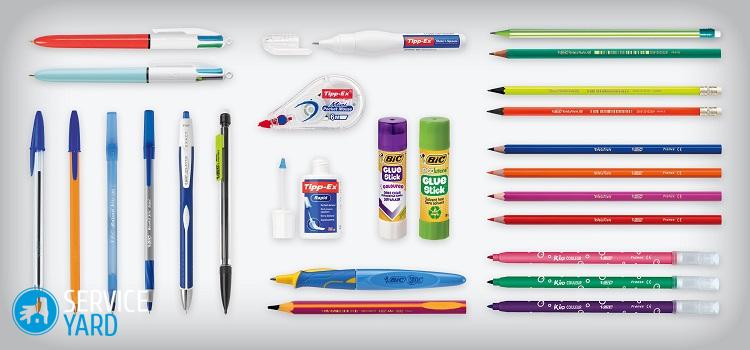How to choose a corrector?

Currently, the importance of clerical proofreaders is difficult to overestimate. When they first appeared on the market, students were able to appreciate this innovation. Thanks to the innovation, it was possible to successfully forget what “dirt in notebooks” is. The article is devoted to how to choose a corrector, what options are presented on the market. Any of the corrective devices will allow you to quickly fix the blots in the school or lecture notebook.
to contents ↑Appointment
Corrective compositions are designed to correct blots and errors when writing text by painting them with a white substance that looks like paint. At first, the choice of error correction tools was small, but today an impressive assortment allows you to choose a convenient corrector for different needs.

They are popular not only among schoolchildren and students, but also among office employees. Now you can quickly fix a small mistake in the text, while saving paper and not working "On the trash."
to contents ↑Corrector clerical: composition
The main classification feature by which correctors are divided is the substance that underlies the fluid. There are coloring liquids based on alcohol and water:
- A feature of alcohol compounds is its good hiding power. They dry quickly on the surface of the paper sheet. However, this advantage is also a disadvantage. The corrector dries quickly inside the bottle, so you often have to use a solvent.
Important! The smell of the composition is quite sharp. Alcohol proofreaders are resistant to low temperatures.
- Aqueous liquids do not have such a strong hiding power as alcohol, but this is quite enough to make a qualitative adjustment. The aqueous composition slowly dries on paper. At the same time, the paint in the bottle dries more slowly. If this happens, the solvent is water.
Important! Coloring compounds on the water are odorless. However, there is a drawback: water proofreaders are afraid of low temperatures.
- Oil products appeared on the market relatively recently. Their peculiarity is that they combined the advantages of water and alcohol dyes, while devoid of their disadvantages. The composition does not ignite, dries quickly on paper and does not dry out in a bottle. Moreover, its cost is much higher than the previous two.

Application principle
Depending on the method of application, such options are distinguished.
With brush
The bottle is equipped with a brush for applying dye to paper. A shaker ball is placed inside it, which allows shaking the bottle to bring the liquid into a homogeneous state. This is a classic corrector option.
Important! One not very convenient nuance when using it is the formation of large blots.
Sometimes when using such a tool you can stain yourself or your clothes. But you will quickly deal with this problem if you use our tips:

A pen
This is a very convenient and compact option with a dosed liquid supply. The case is made of elastic thin polymer. When you click on it, a dye appears. Upon completion of work with the corrector, it is necessary to close the “core” of the handle with a cap.
Important! Such proofreaders most often dry out and it is not always possible to dilute a substance.

Tape
This is an excellent option for making corrections in all types of texts - printed or handwritten. The shape of the case is very ergonomic and comfortable, so applying a correction tape to the surface is a pleasure. The composition is homogeneous, does not crumble. The tape breaks easily.
to contents ↑Important! Due to the special chemical composition, the color is as close as possible to the shade of the paper sheet. Therefore, corrections are almost invisible. Another advantage: no need to wait until the dye has dried.
Stock footage
For the choice to be right, you need to try all the varieties in the store and decide which option is more convenient for you.





